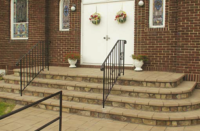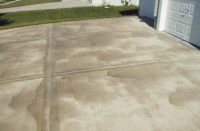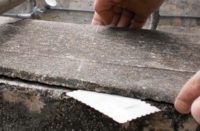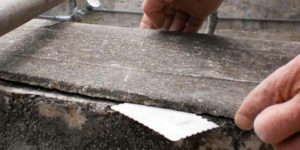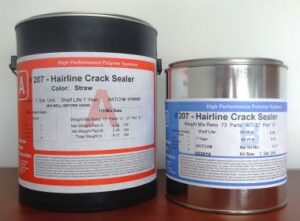Most cracks in a substrate will telegraph through overlays if not prepared properly, so spend the extra time and dollars to prep the area correctly. If you repair problem areas prior to installing an overlay you will minimize the chances of cracks in your overlay.
One method of repairing cracks in the substrate that has worked for me is to clean out the cracks with an angle grinder with either a crack-chasing blade or a typical 41⁄2-inch diamond blade. Vacuum the joint and prime with the priming agent used for your patch product. Once it is dry, patch with a high-early-strength concrete patch material. Make sure that you fill the crack to the top — do not fill it like grout so there is a depression, and do not overfill so that patch material is on either side of the crack.
Once the patch is dry, take a razor-blade scraper (wallpaper scraper) and clean any excess material off. Next roll on an elastomeric polymer, such as “Mulasticoat,” over the crack and, while still wet, place a fiber-mesh tape over the crack and apply another coat of elastomeric polymer over the tape. (I like to use a thick nap roller, not the little foam rollers, because it holds more material.)
Allow this to dry for a minimum of 8 hours. Now that the cracks have been patched and covered with elastomeric polymer and fiber-mesh tape, we have minimized the chances of that crack coming back. The theory behind this is similar to the taping of drywall joints except that you are using a flexible material to span the crack. This method should move with the slab if it decides to move in the future.
